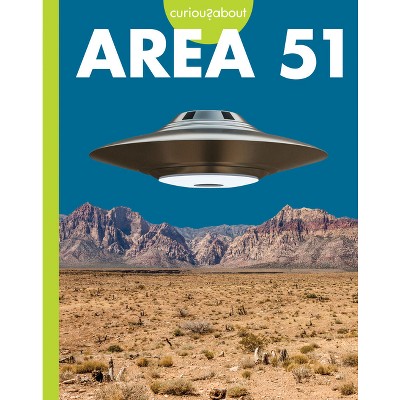Sponsored

The New Fish - by Simen Saetre & Kjetil Ostli (Paperback)
$14.33Save $7.67 (35% off)
In Stock
Eligible for registries and wish lists
Sponsored
About this item
Highlights
- Eat more fish, the doctors say.
- Author(s): Simen Saetre & Kjetil Ostli
- 365 Pages
- Nature, Environmental Conservation & Protection
Description
About the Book
"In a prizewinning five-year investigation, authors Simen Sµtre and Kjetil [stli took an in-depth look at Norway's role in the global salmon industry and, for the first time, produced a comprehensive evaluation of the detrimental effects of salmon farming. From lice to escapees, from concentrating the waste of sea pens in the fjords through which wild salmon swim to their natal streams to the fact that salmon farming causes a net reduction of protein reaped from the ocean, the results don't look good. Recent victories, such as the banning of net-pen fish farms in the waters of Washington State, are an indication that we are awakening to the environmental price of engineered fish. It is said that we will continue to make the same mistakes unless we understand them. The New Fish combines nature writing from Norwegian fjords, the coast of Canada, Icelandic landscapes and the far south of Chile with character-driven literary non-fiction and classic muckraking. The authors started with this question: What happens when you create a new animal and place it in the sea? This book will tell you the answer"--Book Synopsis
Eat more fish, the doctors say. But is the salmon you are consuming really healthy? In the early 1970s, a group of scientists researched how to make more food for the growing population of the world. They looked to the sea. They sampled genes from salmon in 41 Norwegian and Swedish rivers and designed a new salmon that was fatter and faster growing. This was considered an amazing innovation and was the beginning of a new industry: salmon farming. The industry spread from coastal Norway to Scotland, Canada, Australia, Ireland, Chile, Iceland, the Faroe Islands, and the United States. Business boomed, jobs were created, and a new type of food, the farmed salmon, spread around the globe. People everywhere bought and enjoyed the abundant fish: grilled, poached, roasted, and as sushi and sashimi. They were grateful for this delicious, affordable protein.But at what cost?
We now know that there were unintended consequences: some of these new fish escaped, competing for sustenance with other fish in the sea. The new fish spread diseases, salmon louse swarmed, and wild salmon stocks dwindles.
In a prizewinning five-year investigation, authors Simen Sætre and Kjetil Østli took an in-depth look at Norway's role in the global salmon industry and, for the first time, produced a comprehensive evaluation of the detrimental effects of salmon farming. From lice to escapees, from concentrating the waste of sea pens in the fjords through which wild salmon swim to their natal streams to the fact that salmon farming causes a net reduction of protein reaped from the ocean, the results don't look good. Recent victories, such as the banning of net-pen fish farms in the waters of Washington State, are an indication that we are awakening to the environmental price of engineered fish. It is said that we will continue to make the same mistakes unless we understand them. The New Fish combines nature writing from Norwegian fjords, the coast of Canada, Icelandic landscapes and the far south of Chile with character-driven literary non-fiction and classic muckraking. The authors started with this question: What happens when you create a new animal and place it in the sea? This book will tell you the answer.
Review Quotes
"Farmed salmon is cheap, delicious, and available in most any grocery store--and if you've ever wondered if it was too good to be true, trust your instincts. In the eye-opening book The New Fish, authors Saetre and Ostli wade into the deep, dark waters of Big Salmon, from its start as a food fad in 1970s Norway to the global mess it's become--and how it can be mitigated. The result of a five year investigation, the well-written tome will make you think twice the next time you want to toss some lox on that bagel." -- The Rooted Journal
"an extraordinary piece of environmental journalism." -- Gray's Sporting Journal
"One part muckraking, one part a love letter to salmon, if you eat, fish for, or just appreciate salmon, it's a must read." -- Adventure Journal
The journalists Simen Saetre and Kjetil Ostli, who spent five years studying farmed salmon, have written a 365-page exposé in the vein of Rachel Carson's "Silent Spring." -- Florence Fabricant, The New York Times
"The detailed history of salmon fisheries is a bit niche, but the authors succeed in highlighting how small decisions can have big ecological consequences." -- Publishers Weekly
Journalists Saetre and Østli make their English language debut with this eye-opening overview of the damage salmon fisheries inflict on the environment and public health. Chronicling the industry's early days in the authors' native Norway, they describe how in 1970 brothers Sivert and Ove Grøntvedt established the first salmon farm after putting a large net filled with 16,000 young fish in the sea, and how in 1971 researcher Trygve Gjedrem started a breeding program that still provides much of the world with its salmon stock. According to the authors, the work required to sustain salmon farms had far-reaching if unintended consequences. The tight quarters led to the proliferation of salmon lice that threatened wild populations when captive fish escaped, but delousing agents proved deadly to marine life near the farms. Humans were affected, too: Farmed salmon have gray meat unless they're fed a synthetic compound that, when consumed in large quantities, can cause vision problems in people. The detailed history of salmon fisheries is a bit niche, but the authors succeed in highlighting how small decisions can have big ecological consequences. It's a smart if somewhat narrow appraisal of humanity's complicated relationship with nature. Photos. (July) -- Publishers Weekly
Dimensions (Overall): 9.0 Inches (H) x 5.8 Inches (W) x 1.1 Inches (D)
Weight: 1.5 Pounds
Suggested Age: 22 Years and Up
Sub-Genre: Environmental Conservation & Protection
Genre: Nature
Number of Pages: 365
Publisher: Patagonia
Format: Paperback
Author: Simen Saetre & Kjetil Ostli
Language: English
Street Date: July 11, 2023
TCIN: 87391565
UPC: 9781952338144
Item Number (DPCI): 247-41-2856
Origin: Made in the USA or Imported
If the item details aren’t accurate or complete, we want to know about it.
Shipping details
Estimated ship dimensions: 1.1 inches length x 5.8 inches width x 9 inches height
Estimated ship weight: 1.5 pounds
We regret that this item cannot be shipped to PO Boxes.
This item cannot be shipped to the following locations: American Samoa (see also separate entry under AS), Guam (see also separate entry under GU), Northern Mariana Islands, Puerto Rico (see also separate entry under PR), United States Minor Outlying Islands, Virgin Islands, U.S., APO/FPO
Return details
This item can be returned to any Target store or Target.com.
This item must be returned within 90 days of the date it was purchased in store, shipped, delivered by a Shipt shopper, or made ready for pickup.
See the return policy for complete information.
Frequently bought together
Trending Non-Fiction

$15.68
Buy 1, get 1 50% off select books
4.8 out of 5 stars with 204 ratings

Highly rated
$19.31
was $20.98 New lower price
Buy 1, get 1 50% off select books
4 out of 5 stars with 67 ratings

$18.28
was $19.58 New lower price
Buy 1, get 1 50% off select books
4.7 out of 5 stars with 17 ratings

$4.59
MSRP $7.99
Buy 1, get 1 50% off select books
4.8 out of 5 stars with 124 ratings

$6.20
MSRP $10.95
Buy 1, get 1 50% off select books
4.8 out of 5 stars with 33 ratings

$7.09
MSRP $9.99
Buy 1, get 1 50% off select books
4.9 out of 5 stars with 46 ratings











